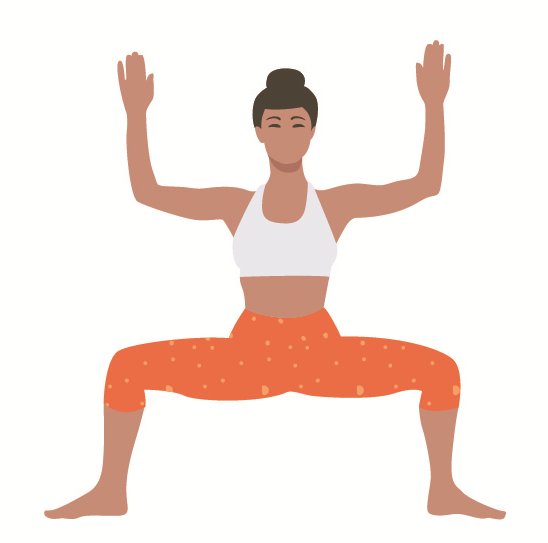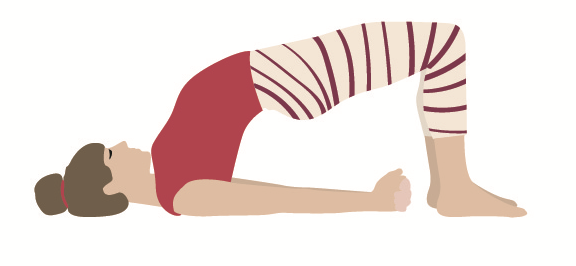Swadhisthana Chakra: Emotions, Creativity and Deep Healing
“Meditation on the pure lotus, which is named Swadhisthana, frees you from the control of your enemies, such as egoism, ignorance, lust and greed.””
Let’s start with a short recap. The last chakra-related blog post was about the root chakra or Mooladhara chakra. It builds our foundation in life, as it is our physical life itself, our body, home, job, family, everything that we need to maintain our life and the fear of being unable to do so.
The Mooladhara chakra is located at the base of our tailbone, deep in the pelvis, shaped as a golden yellow square.
What is the Swadhisthana Chakra?
This week, we travel a little up the spine to the Swadhisthana chakra or sacral chakra in English. It is located very close to the Mooladhara chakra.
Swa translates as = self or your own nature, swad = sweet or taste, sthana = residence
It has the form of an upward-facing crescent moon. This chakra governs the water element; hence, it is of silverish-greyish colour.
Six orangy petals surround the chakra’s shape. Remember, the Mooladhara chakra has four petals.
The number of petals equals the number of sounds which the chakras resonate with. In the case of the swadhisthana chakra, its six sounds are:
baṁ, bhaṁ, maṁ, yaṁ, raṁ, laṁ
Not to be confused with the bija mantra, the seed mantra of the chakra, VAM.
Mooladhara is associated with the sense of smell, an important function of determining if food or liquids smell safe to eat and drink to stay alive.
Swadhisthana chakra is associated with the sense of taste.
The taste for and of life as this chakra is all about our emotional body. Our relationships with family, friends, and colleagues. Our ability to form and maintain these important relationships in a healthy way. Our self-worth and self-expression, or their lack, depends on the health of the chakra.
With relationships come strong emotions. Emotions of desire are directed to people or objects; the thinking of the grass is always greener on the other side.
Relationships bring forth jealousy. We are naturally subject to a certain degree of jealousy from early childhood on. First, we are precious about our toys or parents, then our friends, then boyfriend/girlfriend, then partner/spouse, and so forth.
This jealousy often originates from a sense of insecurity or lack of self-worth that we feel about ourselves. Feelings of not being enough (pretty enough, intelligent enough, wealthy enough …) can lead to the assumption that our loved ones think the same about us and get involved with someone we might consider prettier, more intelligent, whatever fault we see in ourselves. These emotions are often buried in our subconscious mind, which is the domain of the swadhisthana chakra.
The ability to express these emotions in a healthy way is the benefit of the swadhisthana chakra.
Create Healthy Eating Habits in 5 Easy Steps with our FREE 5-Day Email Challenge.
Subscribe to our weekly Sunday Read newsletter & blog ‘Why Yoga & Ayurveda Hold the Answer to Everything.’
The Flow of Everything
As the water element is of flowing and moving nature, feelings of being in flow or being stuck point to the state of the sacral chakra.
The energy of this chakra helps you to move and change as needed, to be able to adjust and adapt to life situations and to keep you in flow.
Interestingly, our ability to adapt is the best way to avoid stress. Stress hormones are secreted by the adrenal glands, which are located at the top of the kidneys. Kidneys and bladder both naturally connect to the water element in our body. Both, as you know, are situated in the sacral chakra area. The circle is completed.
Swadhisthana Chakra’s Deity
This beautiful picture of the swadhisthana chakra with all its symbolism.
You can see the six petals, the silver-grey crescent, lord Vishnu the sustainer of balance, the mystical creature Makara, the vehicle of Varuna the god of the water and Rakini devi.
Rakini is not as well known here as other goddesses.
She is, in the tantric tradition, seen as the empress.
Swami Saradananda describes her in her book The Essential Guide to Chakras as
…the two-headed concierge who holds the key to maintaining a healthy balance between stability and flow. She enables you to let go of fantasy while holding on to your dreams. Her face is beautiful and inspiring if you follow restraint in gratifying your desires. But she appears frightful if you are a slave to your passions.
What can you do to balance the Swadhisthana Chakra?
As mentioned in my blog post about the Mooladhara chakra, working with the chakras on a deeper level requires the supervision of a teacher.
Reflection
But here are some useful pointers to add another level of awareness to your life. You could reflect on the following questions:
Do I feel worthy of happiness and enjoyment in my life?
Do I feel stuck? If so, in which area of my life do I feel stuck?
How do I maintain my relationships? Are they healthy? Have I created healthy boundaries?
How can I create change and stay balanced at the same time?
How do I see my plans for my future? Are they realistic?
Journaling about these questions can lead you to deep insights into your life and provoke powerful changes. Approach these questions with curiosity, openness and kindness.
Meditation
Sit comfortably, lengthen your spine, and relax your shoulders.
Close your eyes or lower your gaze.
Visualise a silver-greyish crescent in the centre of your pelvis.
Chant, AUM Vam, AUM Vam … continue as long as you can focus.
Chant with me:
How your Yoga Practice can inspire you
All postures focusing on the pelvis and hips are excellent companions when working with the swadhisthana chakra. Integrate some of these poses into your daily Yoga practice:
In standing, focus on
Triangle pose, goddess pose, Warrior 2.
In a seated position, you can practise:
Janu shirshasana, butterfly or cobbler pose.
Lying down, you can integrate:
Cobra pose, bridge pose.
Final Thoughts
In this blog post, we've embarked on a journey up the spine to explore the swadhisthana Chakra, also known as the sacral chakra. Unlike the foundational root chakra, the swadhisthana chakra is associated with the water element and represents our emotional body and relationships. With its silverish crescent shape and six orangy petals, this chakra resonates with six distinct sounds, each tied to our emotional experiences.
This chakra is all about the taste for life, shaping our relationships with family, friends, and colleagues and our sense of self-worth and self-expression. It delves into the complex emotions we experience in relationships, like desire and jealousy, often rooted in insecurities about ourselves. The swadhisthana chakra teaches us to express these emotions in healthy ways.
As water flows, this chakra's energy keeps us in a state of adaptability and flow, helping us navigate life's twists and turns. Interestingly, this adaptability can also help us combat stress, which is closely linked to the water element in the kidneys and bladder, both in the sacral chakra area.
Working with this chakra involves self-reflection and deep awareness. Questions about self-worth, feeling stuck, and the health of your relationships can lead to profound insights and personal growth when journaled with curiosity and kindness.
Consider incorporating specific yoga poses into your practice to further enhance your connection with the swadhisthana chakra. Poses that focus on the pelvis and hips, like Triangle, Warrior 2, and Janu Shirshasana, can help balance and activate this chakra, allowing you to tap into its transformative energy.
So, as you dive into the world of the swadhisthana chakra, remember that it's all about finding your flow, balancing your emotions, and nurturing healthy relationships as you continue your journey towards self-discovery and personal growth.
Have you learned something new? Maybe you can relate to it?. Let me know. You can leave a message on Instagram, Facebook or even good old email.
I love hearing from you!
Katja x
P.S. Did you know that healthy eating habits also support the chakras as they connect to the organs located in the areas of the individual chakras?









